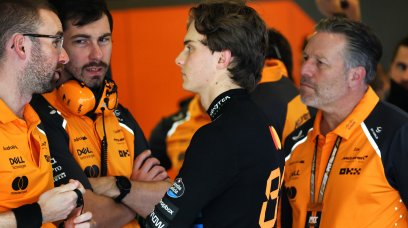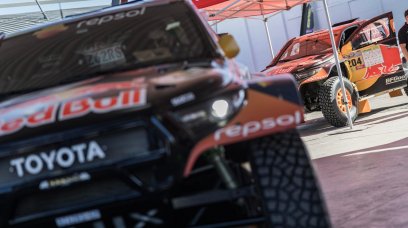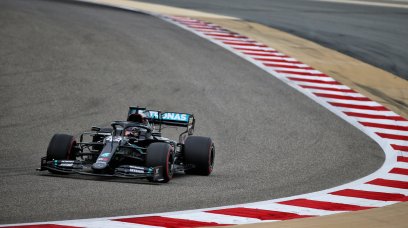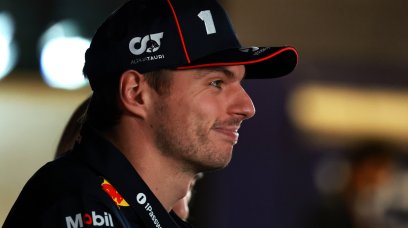F1's first pre-season test of 2022 was met with plenty of excitement and curiosity, not only because it marked the first time that the all-new cars would run together on track, but also due to the fact that two teams had not yet shown their full designs to the media. One team was Alfa Romeo. The other? Red Bull, of course. Prior to the trip to Barcelona, they went no further than a basic team launch to introduce new sponsors and without offering any technical value. Curiosity, in particular, swept the paddock at the Circuit de Barcelona Catalunya ahead of Wednesday's running, as media - and in turn fans - waited for their first glimpse of the RB18. Indeed, Lewis Hamilton was compelled to go on a tour of the pit lane to study rival designs, taking a moment to peer inside the Red Bull garage as 2021 title rival Max Verstappen got strapped into his car. When it emerged, the latest car from designers Adrian Newey and Rob Marshall did not disappoint, revealing itself to be a machine that was anything but conventional. Not only did the bodywork shapes represent yet another interpretation of the new rules, but the whole concept of the car also caused a stir, particularly the suspension details. Analysing the aerodynamic concept of the RB18, it is clear that Newey, Marshall and the rest of their team looked carefully at airflow under the car and at sidepod height; the former shooting through the venturi tunnels along the entire underbody of the car and the latter running around the sidepods to provide some additional cooling to the Honda engine.
A striking lower lip on the RB18
It is impossible not to be intrigued by the unprecedented lower lip on the sidepod inlet, which separates the lower airflow from the upper. The lower airflow runs along the bodywork, making use of the Coanda effect, with the airflow sticking to the surface and following the bodywork shape from front to rear (see arrows in the image above). At the rear-end, the bodywork suddenly curves inwards, in a way that is similar to last year's car (the RB16B). As such, Red Bull have tried to keep the package as compact as possible. The floor, on the other hand, has a side profile with a rather evident cut (see the image below). It is also characterised by a distinctive front section, due to the design of the sidepods as described. Mercedes pursues this same effect with the wave pattern on the side of the W13's floor . The engine cover is quite narrow at the top, but expands in front of the rear wing support. In this section, there is a very generous outlet to allow hot air to escape from the radiators. The construction details in this area are extremely refined, but Red Bull should still be able to easily change this configuration over the course of the season – depending on the circuit.
Pulling instead of pushing
As for the suspension, Red Bull's decision to go with pull-rod at the front stands out, with teams normally adopting push-rod here. This principle enables the dampers to be placed lower in the chassis, thus lowering the center of gravity, which is - in theory - better for road holding. In any case, the suspension looks completely different from that of the RB16B. However, this is not motivated by the new 18-inch Pirelli tyres, but by the new aerodynamic characteristics of the car. After all, to maximise the load produced by the venturi channels on the floor, the ride height needs to be managed precisely. Limiting variations in ride height between the front and rear of the car, as well as between the two sides of the car, is crucial to maximising aerodynamic efficiency. In this area, however, Newey already has a wealth of experience. In fact, he successfully applied similar techniques with the active suspension seen on the Williams FW14B in 1992.
Most read








